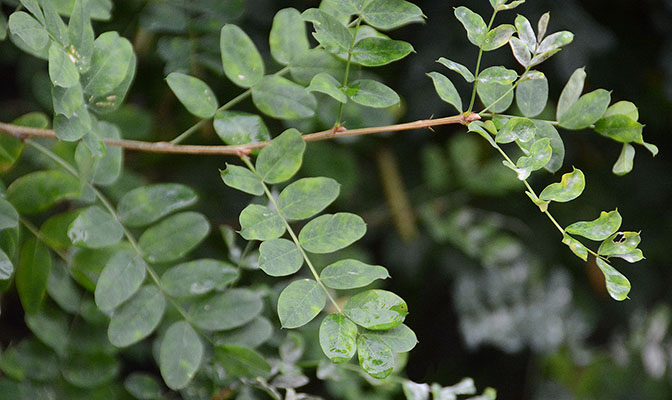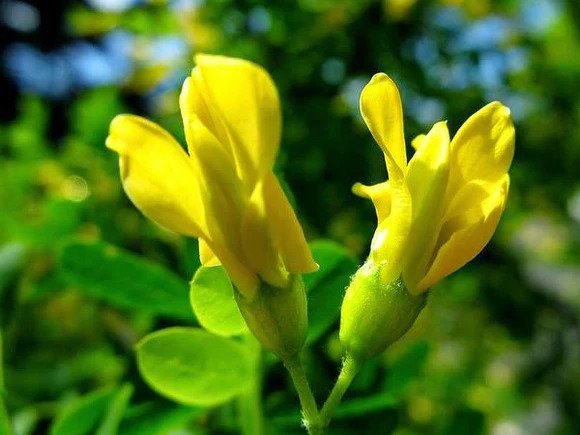
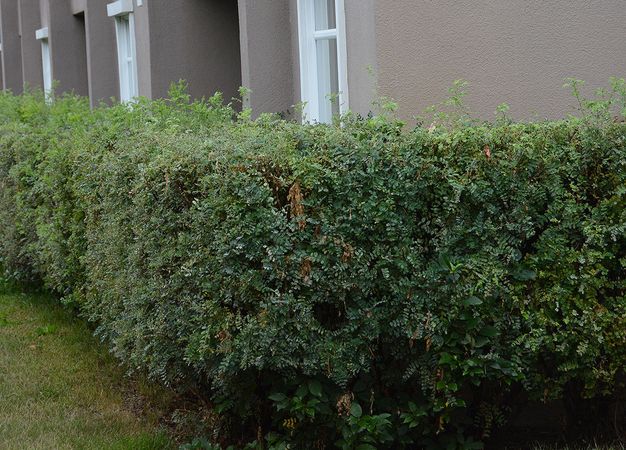
This guide is meant to teach you how to propagate Siberian Peashrub (Caragana arborescens), a very hardy zone 2 perennial shrub native to Siberia.

Hardiness Zone: 2-8

Soil Type: Well-drained Clay, Sand, or Loam.

Water: Normal

Exposure: Full Sun to Partial Shade.
Siberian peashrub is a beautiful flowering shrub that grows very well as a hedge.
From May to June, Siberian peashrubs blooms appear as lovely, fragrant yellow flowers.
Later in the season, the shrub produces small peastalks that attract many sorts of birds and insects.
Fun fact: The seeds are actually edible when cooked!
Siberian peashrubs grow extensive root systems that can also become a great asset to prevent and control soil erosion.
Wildlife Value
Since Siberian peashrub blooms fragrant flowers, they attract many beneficial insect pollinators such as bees, and butterflies.
Songbirds often use the shrubs for nesting and the seeds as food.
Best Way to Propagate Siberian Peashrub (Caragana arborescens)
How to Propagate Siberian Peashrub by Seed
You can harvest seeds from local trees in the fall or order them online here: Treeseedsonline.
Siberian peashrub seeds have a hard coat, you’ll need to do some pretreatment if you want to successfully germinate them.
Without pretreatment, it’s going to be hard… maybe 10% or less of the seeds will germinate.
This pretreatment is just about making the seed coat permeable, that way the seed embryo can take up water and begin to germinate.
- First, place the seeds in a container and pour warm (not boiling!) water over them and leave them to soak for between 12-24 hours.
- Next, wait and the seeds that take up water will swell to around 2-3 times their previous size.
- Then, remove all swollen seeds as these will be damaged by further pretreatments.
- Now sow these winners immediately.
- You can repeat the warm water treatment at least 3 more times if get more seeds to take up water, you can make the water a little hotter each time.
- Finally, the seeds that remain small are still good, but they’ll need cold stratification
Sown Siberian peashrub seeds can take up to 3-4 weeks to sprout!
For the seeds that haven’t taken up water and cold stratify them:
Cold stratification: Siberian peashrubs cold stratification require at least 4 weeks.
- To do this, place your seeds in a plastic bag with moist sand, and place it in the coldest area of your refrigerator.
- Make sure to label and date them before stratification.
- Once your seeds are stratified, surface sow in a mix of potting soil and cover with a thin layer of soil.
- Moisten and keep the soil humid but not soggy.
- Patiently wait for sprouts!
How to Propagate Siberian Peashrub By Taking Cuttings
You can propagate Siberian peashrubs by taking cuttings at two different times of the year.
It can be softwood cuttings, during the growing season or hardwood cuttings when the plant is still dormant or barely waking up.
Softwood Cuttings
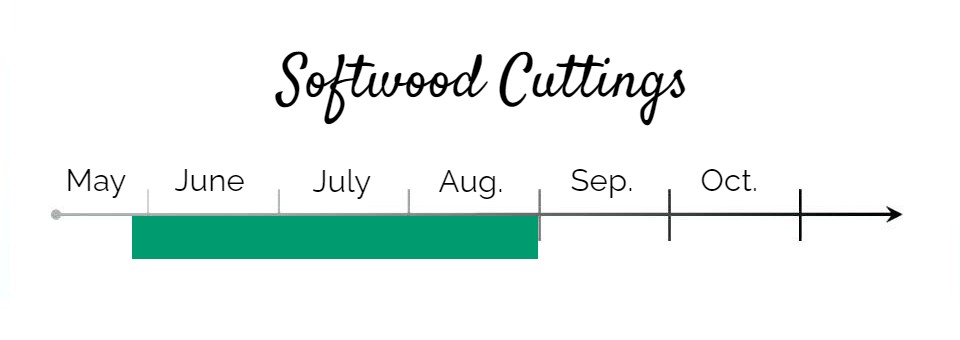
Softwood cuttings are taken from fresh growth, from the end of May until late August.
They are more tender, require more humidity but can root much faster.
This is the best way to take Siberian peashrub cuttings:
- First, look at a branch and identify the season’s new growth.
- Next, cut a branch just below where the stem turns from green to brown.
- In general, a good length for cuttings is 6-8 inches, but more importantly, make sure the width is thick enough, 1/8-1/4 inch each is good.
- When you cut, you want to do it at an angle and below a node, then scuff up the bottom inch of your cuttings.
- Remove all of the leaves from the cutting except a pair or two at the top.
- Moisten your cuttings, dip in rooting hormone, then lightly flick off excess powder.
- Prepare your rooting medium by poking holes through it, then insert your cuttings, and tamp the soil.
- Keep watering the cuttings to maintain humidity, and cover with plastic if the humidity is too low.
- Roots will form within 4-6 weeks, from there you can uncover and let them grow more foliage before transplanting.
Recommended rooting medium: 2:1:1 parts sand, peat, perlite.
Less organic matter in the propagation mix is ideal to prevent rotting.
Hardwood Cutting
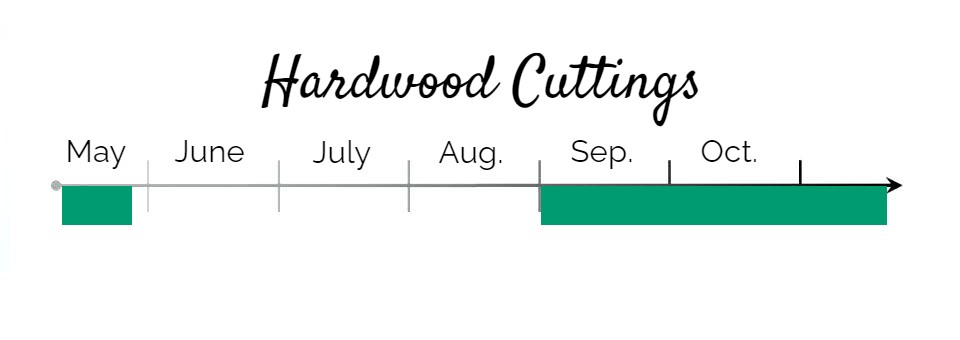
You can also propagate Siberian peashrub by taking hardwood cuttings when it’s dormant. The process is almost identical to softwood cuttings, what’s different is the timing and the length of the cuttings.
With hardwood cuttings, you need to take them after the first hard frosts of fall or early spring before the leaves emerge.
Just like softwood cuttings, you clip your cuttings off a plant, just under a node but make them longer, from 10-12 inches is good.
Same rooting medium and technique, except hardwood cuttings, can take longer to root, sometimes more than 8 weeks.
Pro tip: Keep good moisture and aeration as your top priorities and you’ll have good success at rooting siberian peashrubs without any rotting.
Siberian Peashrub FAQ
1. How big does a Siberian peashrub get?
It can grow as high as 6m and as wide as 4m. The shape it gets depends on how you prune it, you can let it grow as a bush or prune it into a square, fence-like hedge.
2. Can you eat Siberian peas?
Yes, you can eat the siberian peas (seeds), they are edible but you must at least cook them first.
3. Is Siberian Pea Invasive?
Yes, it is considered invasive in many northern areas since it can easily escape urban environments and spread into the forest. It’s considered a tree killer by some, but also widely sold by tree nurseries.
It’s native to the Siberian Forests, which aren’t much different from the Northern boreal forests of America.
4. Is Siberian Peashrub Deer Tolerant?
Yes, in general, deer will leave you Siberian peashrubs alone.
5. How do you take care of Siberian Peashrubs?
There is not much care or maintenance to do with Siberian peashrubs, other than pruning to keep the hedge shape. Slow-release fertilizer can also be applied to the soil once a year in the spring.
6. What is the best time to trim Siberian Peashrubs?
Wait to trim, and prune your Siberian peashrubs until at least after the blooms have finished flowering.

